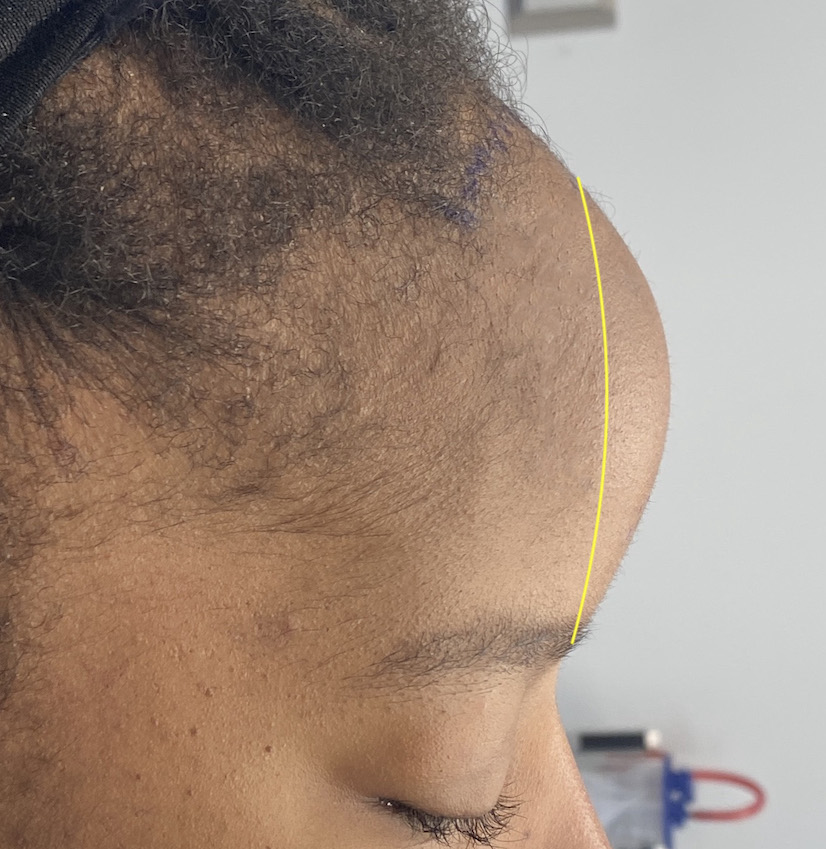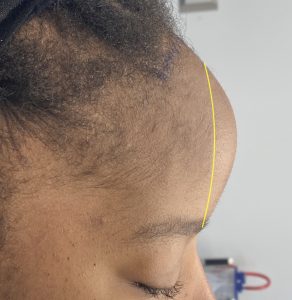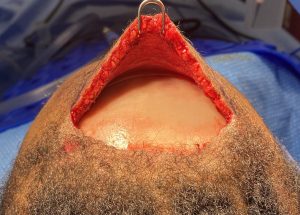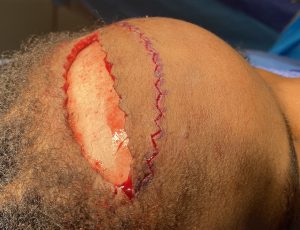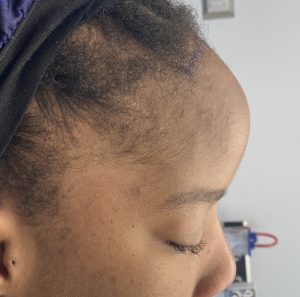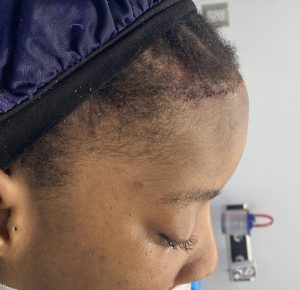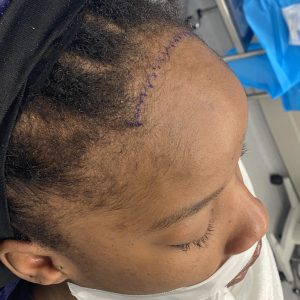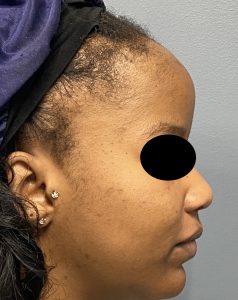Background: The shape of the forehead is well known to be gender specific with distinctly different features for both men and women. While there are variations amongst these gender specific features (e.g., slope and width of the forehead) an excessive forward projection of the upper forehead (frontal bossing) is abnormal whether it occurs in either gender. Frontal bossing is defined as a rounded projection that occurs above the level of the brow bones. This differentiates from excessive brow bone bossing or projection.
While there are numerous medical causes for frontal bossing (e.g., craniofacial syndromes, acromegaly), the aesthetic type is the most commonly seen and often affects women more than men. In women the bossed forehead creates an abnormal ‘porpoise-like’ protrusion that is often described as masculinizing the forehead…although it is more accurately called an aesthetic abnormality that is not a desired feature in either gender. Often in female frontal bossing there is an associated high frontal hairline or long forehead which is undoubtably caused by the upper forehead overgrowth.
In frontal bossing reduction there are three considerations; 1) how much of the bossed bone can be reduced, 2) where to put the incision to do the bone reduction and 3) should the recessed frontal hairline be advanced at the same time. When the decision is made to treat the high hairline and the frontal bossing concurrently the decision is then made to use the frontal hairline incision to perform both procedures. While there is always some trepidation about the frontal hairline incision/scar, their synergistic aesthetic effects makes the scar risk more acceptable.
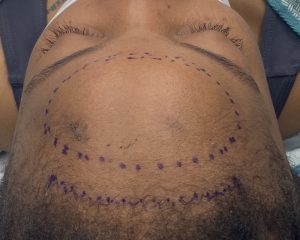
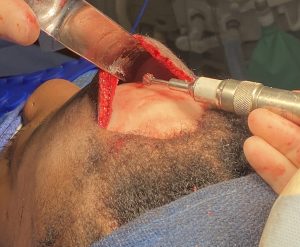
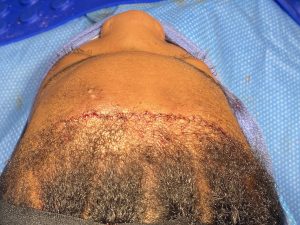
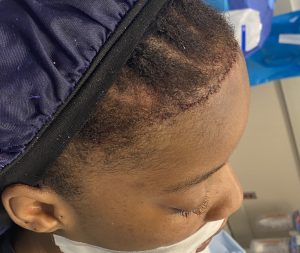
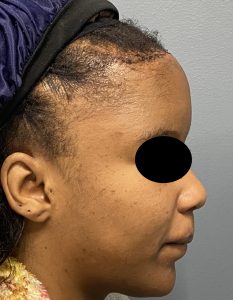
Like all forehead bony reductions there are limits as to how much bone can be safely removed. The forehead is not a particularly thick part of the skull and frontal bossing is usually not an indicator of a thicker forehead bone just a more protruding one. If a high hairline is concurrently present lowering it provides a visual improvement to the frontal bossing by shortening the forehead length.
Case Highlights:
1) Aesthetic frontal bossing is an abnormal projection of the forehead above the brow bones that is dysharmonious to the lower 2/3s of the face.
2) Residual mendosal sutures at the occiput in an adult is an uncommon radiographic finding whose significance to the occurrence of plagiocephaly is a known association.
3) The flat upper back of the head can be treated with a custom skull implant based on the shape of the opposite side of the head.
Dr. Barry Eppley
World-Renowned Plastic Surgeon

